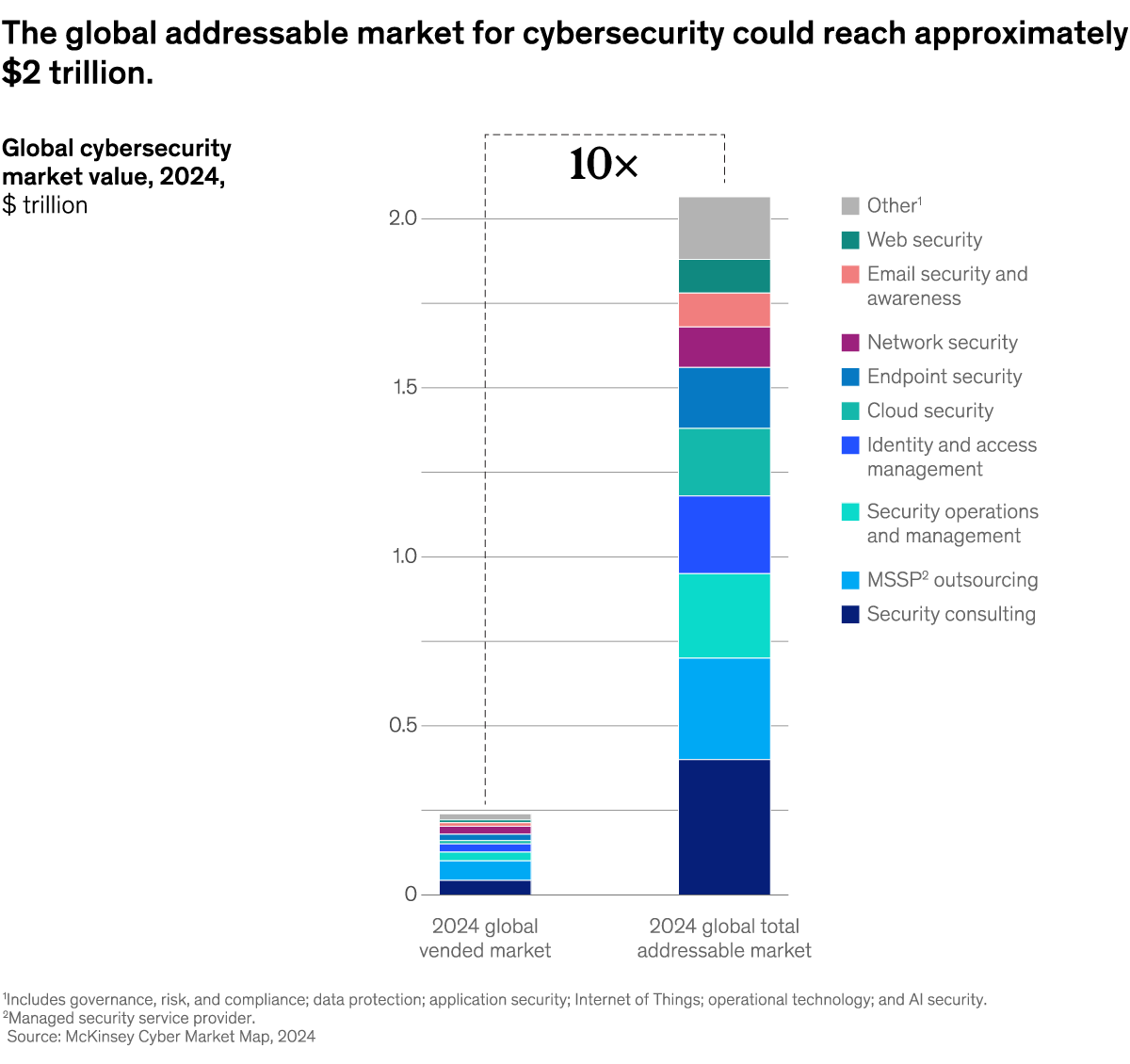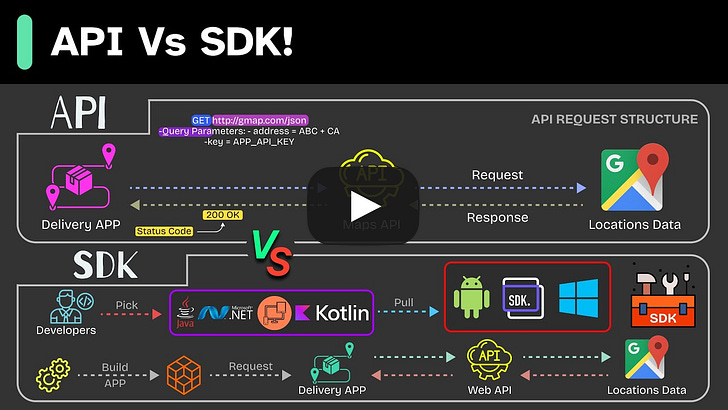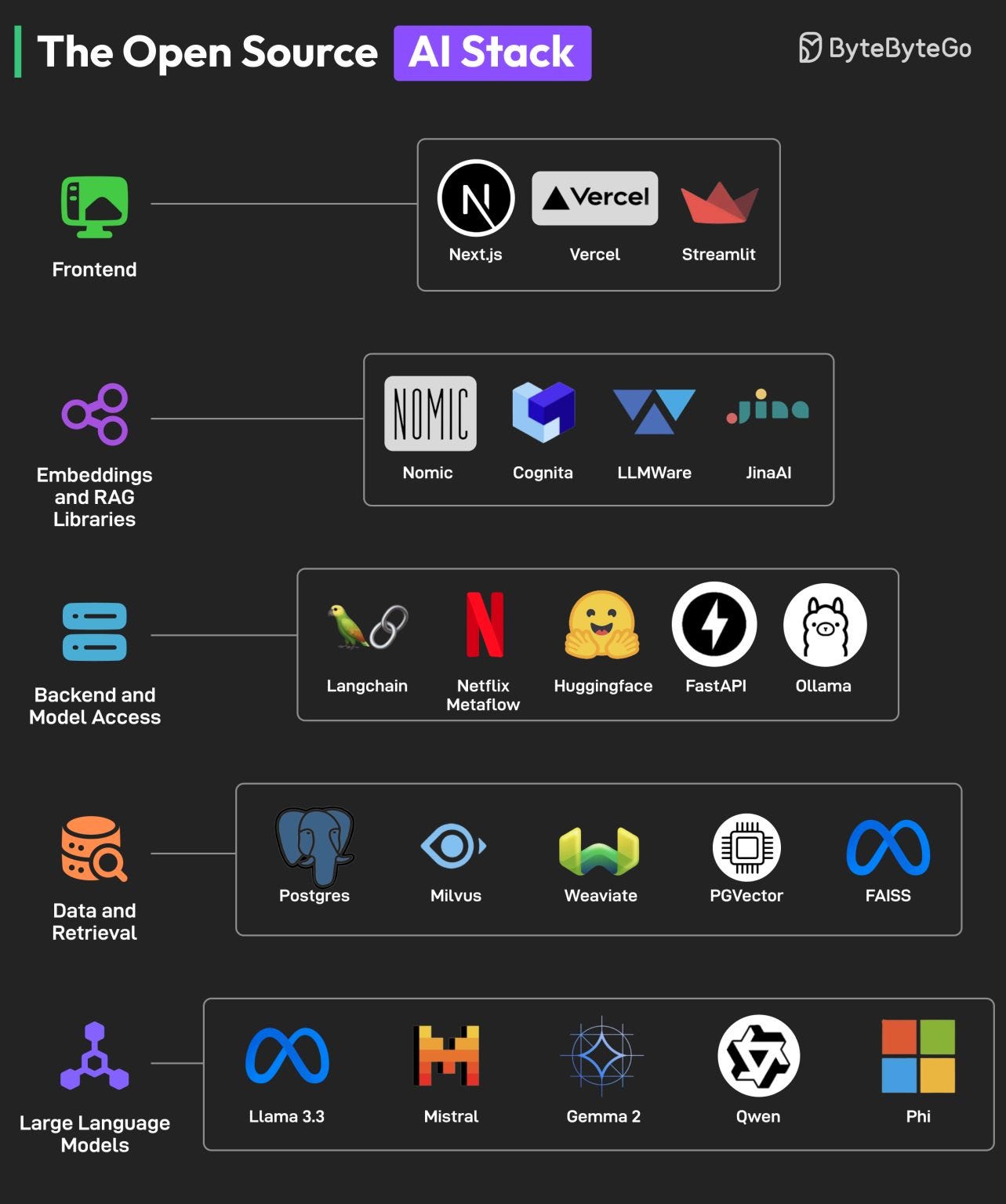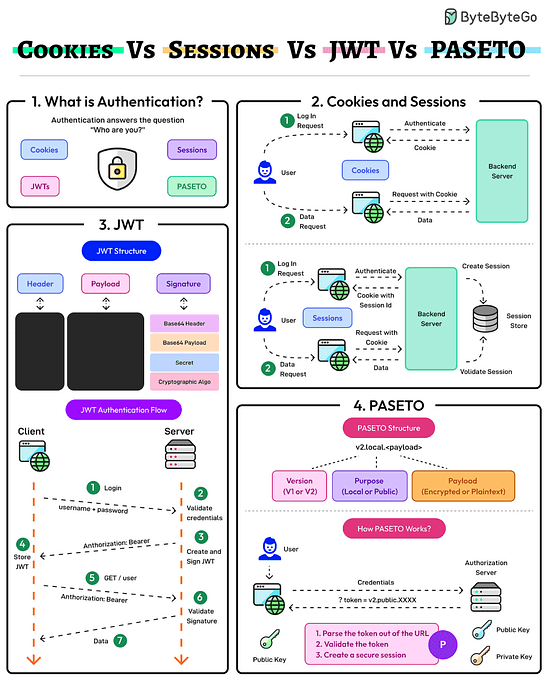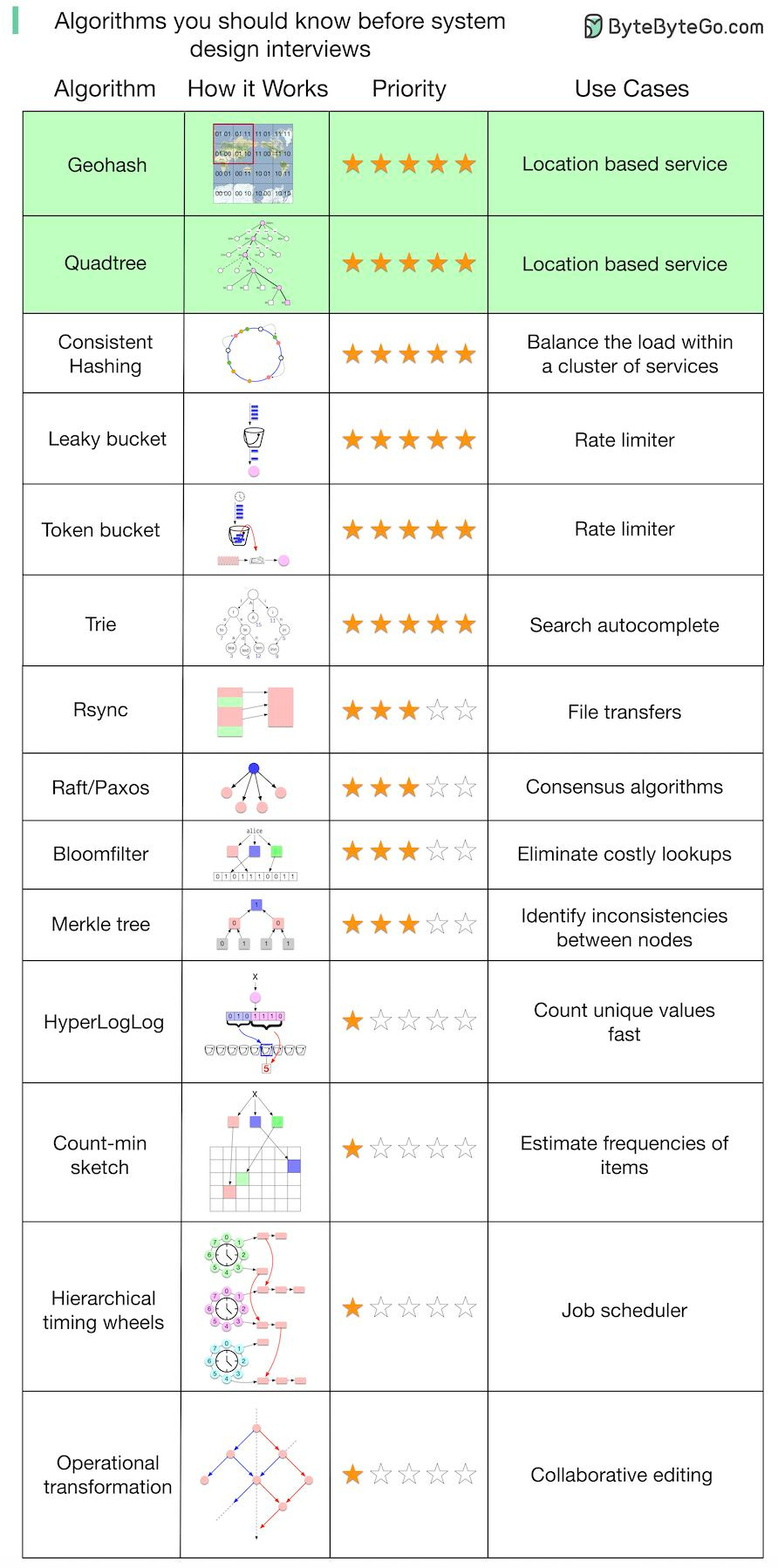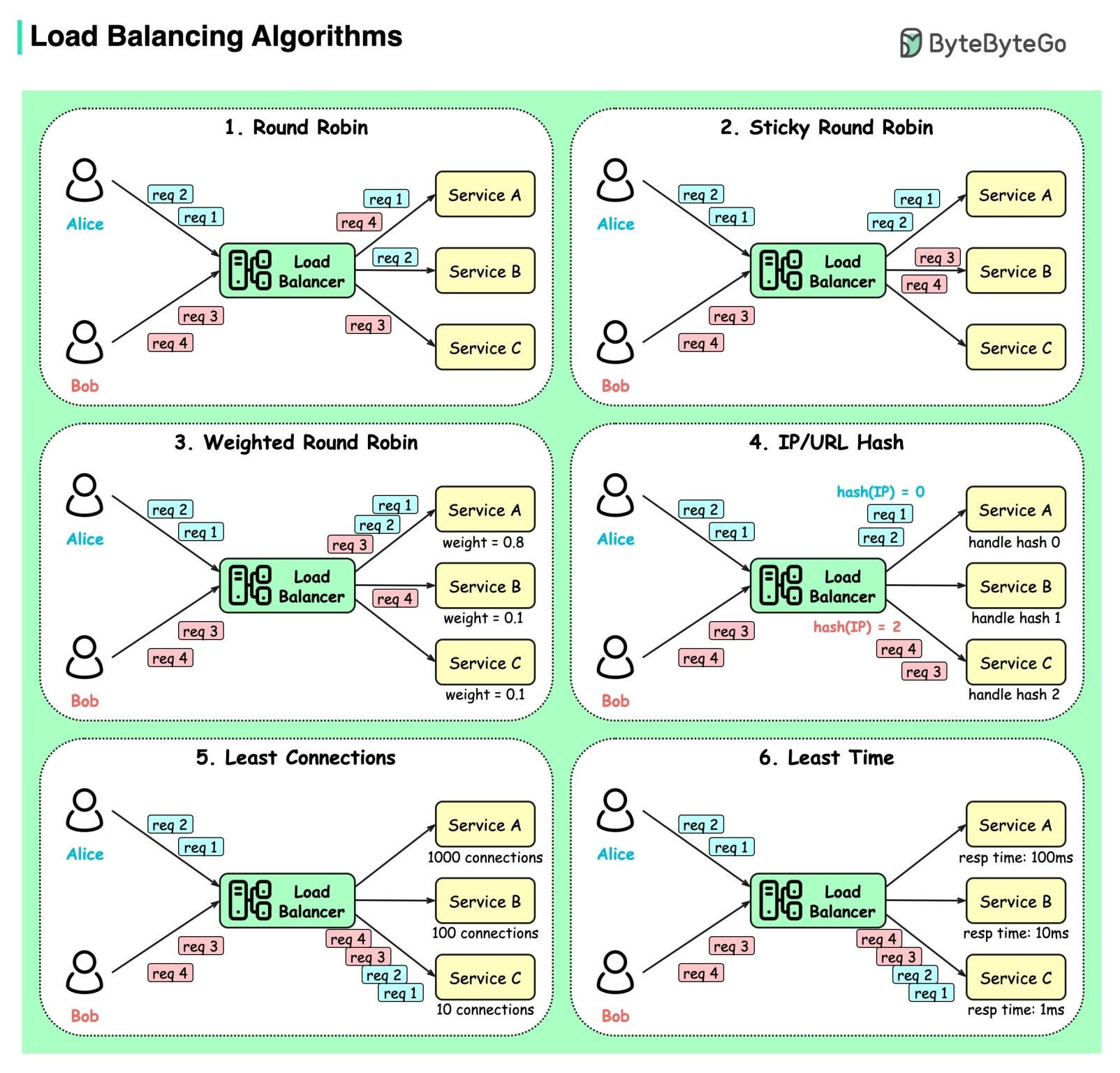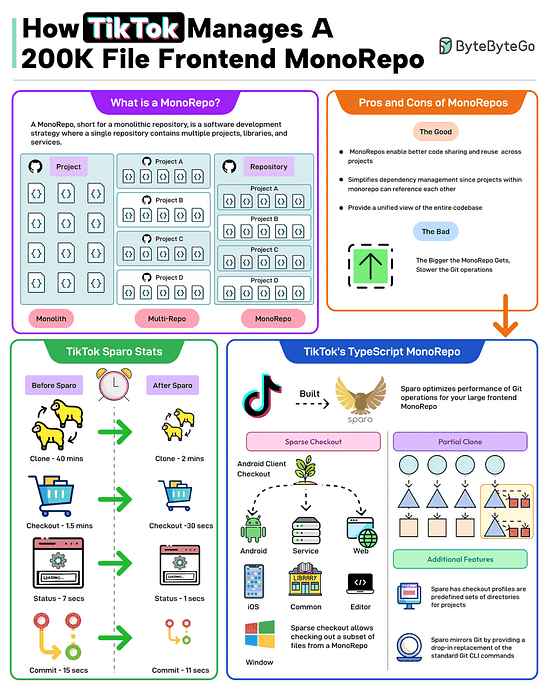Archives
- By thread 5237
-
By date
- June 2021 10
- July 2021 6
- August 2021 20
- September 2021 21
- October 2021 48
- November 2021 40
- December 2021 23
- January 2022 46
- February 2022 80
- March 2022 109
- April 2022 100
- May 2022 97
- June 2022 105
- July 2022 82
- August 2022 95
- September 2022 103
- October 2022 117
- November 2022 115
- December 2022 102
- January 2023 88
- February 2023 90
- March 2023 116
- April 2023 97
- May 2023 159
- June 2023 145
- July 2023 120
- August 2023 90
- September 2023 102
- October 2023 106
- November 2023 100
- December 2023 74
- January 2024 75
- February 2024 75
- March 2024 78
- April 2024 74
- May 2024 108
- June 2024 98
- July 2024 116
- August 2024 134
- September 2024 130
- October 2024 141
- November 2024 171
- December 2024 115
- January 2025 216
- February 2025 140
- March 2025 220
- April 2025 233
- May 2025 239
- June 2025 303
- July 2025 49
-
Your chance to win a VIP ticket to FHL ends tomorrow!!
tick tock… (before it’s too late)Call me Wonka… because there is a frenzy for this VIP “golden ticket” and rightly so, seeing as this opportunity is as RARE as they come.
This is the only chance RIGHT NOW, in the world, where you can meet and hang with me back-stage at FHL in Vegas!!
When you buy a ticket to FHL (before midnight tomorrow night), then you’ll be automatically entered to win a coveted VIP experience at the FINAL FHL!!!
But you have to act now!!! (So smack that link and grab your ticket before it’s too late…)
As a reminder, here’s everything that’s included with the VIP Golden Ticket experience:
Meet ME (Russell Brunson!!) backstage at FHL!! Join me backstage where we can chat, take pictures and get some autographs!
Get an exclusive behind-the-scenes look of the event!! Get the rare chance to see how the sausage is made – what it REALLY takes to put on a marketing event of this magnitude…
(Hint: it’s like launching a rocket while putting on a parade AND doing back-flips all at the same time…)
And keep in mind… with this being the last FHL… YOU WILL NOT get a chance like this ever again!!
Access to the VIP lounge!! Join the other VIP members in a more comfortable, less crowded setting where you can relax AND possibly discover some game-changing networking opportunities!
Reserved FRONT ROW seat for every single speaker!! Sit up close with TONY ROBBINS, Prince EA, Eileen Wilder, Dan Kennedy and literally every other FHL speaker as they deliver their life-changing presentations!!
Room UPGRADE to a SUITE* Spend the last ever Funnel Hacking Live in luxury and style in your very own hotel suite!! (*must have previously booked your standard room at Harrahs or the Linq)
And last but certainly not least…
Complimentary access to the ‘Day With Dan’ event!! On February 11th (the day BEFORE the official kick-off date of FHL)... the master of direct response marketing himself will be presenting LIVE three ‘mini events’ the day before FHL officially kicks off, and YOU will gain access to the ENTIRE DAY of unimaginably valuable information –Mini event #1 – “My Adventures In 40 Years In Direct Marketing And Their Eternal Lessons”
Mini event #2 – “Methodology That I Took From Varied Sources For MY ‘Success System’ That Never Fails”
Mini event #3 – “How To Develop Into ‘The Radical’ Who Attracts Exceptionally HIGH-VALUE Lifetime Customers”
Before retiring, Dan typically charged upwards of $20k for a full day of consulting/mentoring…
This chance to hear him share some of the most VALUABLE information he has to offer is a RARE, once in a lifetime opportunity that will likely not happen again (especially given the fact that Dan no longer agrees to live speaking engagements!)
RESERVE YOUR FHL TICKETS NOW TO BE ENTERED IN THE DRAWING FOR FREE →
If you’ve already purchased your FHL 10 ticket, good news! You’ve already been entered into the drawing for the VIP Golden Ticket Experience. No need to take any additional steps!
For those who are still on the fence OR simply plan on buying their tickets last minute…
Remember, the one lucky winner will be randomly drawn on January 27th!
But you MUST buy your ticket BEFORE MONDAY, JANUARY 20TH, @ 11:59 PM PT!!!
If you have not gotten your tickets before then, your name will NOT be in the drawing!
That means you need to grab your FHL ticket RIGHT NOW!
GET YOUR FHL TICKETS NOW TO BE AUTOMATICALLY ENTERED FOR THE VIP GOLDEN TICKET EXPERIENCE!! →
See you backstage!
Russell Brunson
P.S. Don’t forget, you’re just one funnel away…
© Etison LLC
By reading this, you agree to all of the following: You understand this to be an expression of opinions and not professional advice. You are solely responsible for the use of any content and hold Etison LLC and all members and affiliates harmless in any event or claim.
If you purchase anything through a link in this email, you should assume that we have an affiliate relationship with the company providing the product or service that you purchase, and that we will be paid in some way. We recommend that you do your own independent research before purchasing anything.
Copyright © 2018+ Etison LLC. All Rights Reserved.
To make sure you keep getting these emails, please add us to your address book or whitelist us. If you don't want to receive any other emails, click on the unsubscribe link below.
Etison LLC
3443 W Bavaria St
Eagle, ID 83616
United States
by "Russell Brunson" <noreply@clickfunnelsnotifications.com> - 06:13 - 19 Jan 2025 -
High-Quality Chenille String Curtains – Direct from the Manufacturer-HANSHENG/TAIYU
Dear Purchaser,
I hope this email finds you well.
We are a specialized manufacturer of chenille string curtains, offering a wide range of high-quality products at competitive prices. Our curtains are designed to enhance both residential and commercial spaces with their unique texture and style.
If you are interested in adding our products to your inventory, I would be happy to provide more information or discuss potential cooperation.
Looking forward to the possibility of working together.
Best regards,
Madelyn | Sales manager
by "sales4" <sales4@hanshengtextile.com> - 12:04 - 19 Jan 2025 -
High Quality Mobile Control Valve Manufacturer
Dear info,
Good morning!
Glad to know that you are the leading company in for hydraulic parts with high quality.
We are professional maufacturer of hydraulic control valves from 20lpm to 400lpm with monoblock and sectional type for options.
To enable you to get a good understanding of our quality and service,free samples could be sent on your request. In the next email, I will attach you the product catalogs. Please tell me what items are more salable for you.
Best regards,
Mellin Zang
Exp.Dep.Manager | Mob.:0086-18262815813
HUAI AN SHENG JIE HYDRAULIC MACHINERY CO.,LTD
Skype:Mellin Zang1213 | Email: mellin@sjhydraulic.com
Wechat | whatsapp: 0086-18262815813
Follow us: www.sjhydraulic.com
by "Sukaina Muscella" <muscellasukaina153@gmail.com> - 11:43 - 19 Jan 2025 -
Re: Wirie harness from China
Dear info,
Glad to learn you're on the market of Wiring harness products.
This is Allan from Shenzhen Jinfengsheng Electronic Co,.Ltd in China. JFS, founded in 2007, is a comprehensive enterprise with R&D production and sales. As a MANUFACTURER of high quality wire with competitive price! We supply Shield wire, High voltage wire, Silicone wire, Teflon wire, Flat ribbon wire, Terminal connector, Wiring harness and Various USB charge cable.
Quotation sheet will be provided at once if needed. Should you have any questions, please don't hesitate to contact me. FREE SAMPLES will be sent for your evaluation!
We're sure your any inquiry will get prompt attention.
Thanks in advance!
Best regards,
Allan
JFS Sales Team
by "Harbans Barroeta" <barroetaharbans@gmail.com> - 11:05 - 19 Jan 2025 -
Re: Cost please?
Hi,
I was going through your website, which isn't doing well because of some errors but has a lot of potential in your business.
We can place your website on Google's first page for your city or state.
May I send an SEO plan & error report?
Thank You
by "Angela Scott" <angelascott036@hotmail.com> - 09:30 - 19 Jan 2025 -
(MS: Part 4 of 5) The ‘South Col’ Route
As soon as one person climbed Mount Everest.. more than 6,300 people have achieved the same dream.Hey,
Do you know what happened after two mountaineers first climbed Mount Everest in 1953?
Climbing Everest went from an "impossible goal" to an "achievable goal," and more than 6,300 people have reached the summit since.
But here's something even more interesting.
Over 70% of people use the same 'South Col' route as the first successful climb. This concept is crucial.
I wrote all three books in my Marketing Secrets trilogy to be a 'South Col' path to success for people just like you.
Once you understand this idea, you'll never see challenges the same way again. I'm going to imprint this idea onto your mind today!
Your dream for your business might seem insurmountable, but entrepreneurs like me and thousands of others have faced the same challenges you're facing today.
We discovered the 'secrets' to get past them.
It's not about bragging; we got these 'secrets' from people who had already achieved the success we wanted!
You can find hundreds of these secrets—and the names of the people I learned them from—in each of the three books in my Marketing Secrets trilogy:
- **DotCom Secrets** will teach you how to build profitable sales funnels.
- **Expert Secrets** will teach you how to communicate with your audience.
- **Traffic Secrets** will teach you how to attract new customers.
But there's something else you need to know.
Getting back to Mount Everest... did you know that the majority of fatalities happen on the way back down?
I see this happen in business all the time.
If you make a bunch of money from an offer but then go months without making a dollar, you don't have a business yet!
Imagine getting a bunch of sales but nobody renews.
Imagine getting huge traffic from ads but then Facebook shuts your account down.
Imagine launching a brand-new product only to have a competitor steal your success. You've gotta come prepared.
That's why I also offer my Marketing Secrets trilogy in a single bundle, so you have all the secrets you need to face any challenge within arm's reach.
Okay, one more thing that's amazing about Everest. Do you know who’s climbed it the most times?
A Sherpa from Nepal named Kami Rita reached the summit for the 28th time in 2023! All his ascents came via the 'South Col' route.
This is super important—you've gotta be a 'Sherpa' if you really want to change your life with your business success.
Being a one-time climber isn't enough.
If you have a freak success but don't know how you got there, how are you going to do it again?
But now, imagine hitting your goals by following specific 'secrets'...
You've got a series of steps you can take to hit success again and again!
My Marketing Secrets books are full of doodles that make the ideas super simple to understand.
You can come back to them over and over again and get the same results.
Now, you can get each of the three books in my Marketing Secrets series for FREE (just cover shipping & handling).
You can choose the one you want here.
But tomorrow, I want to offer you all three books as a bundle for an amazing price.
PLUS, I'm going to give you a fourth book called *Unlock the Secrets,* which is like a supercharger for your success.
Look out for my email tomorrow! It's called [Part 5 of 5: Your Path to Success].
Talk tomorrow,
Russell Brunson
© Etison LLC
By reading this, you agree to all of the following: You understand this to be an expression of opinions and not professional advice. You are solely responsible for the use of any content and hold Etison LLC and all members and affiliates harmless in any event or claim.
If you purchase anything through a link in this email, you should assume that we have an affiliate relationship with the company providing the product or service that you purchase, and that we will be paid in some way. We recommend that you do your own independent research before purchasing anything.
Copyright © 2018+ Etison LLC. All Rights Reserved.
To make sure you keep getting these emails, please add us to your address book or whitelist us. If you don't want to receive any other emails, click on the unsubscribe link below.
Marketing Secrets
3443 W Bavaria St
Eagle, ID 83616
United States
by "Russell Brunson" <newsletter@marketingsecrets.com> - 03:44 - 19 Jan 2025 -
Did you grab your "golden ticket”?!? (FHL VIP for FREE!)
you may be outta luck though…The DEADLINE to enter the drawing for your chance to secure a VIP experience of Funnel Hacking LIVE for FREE is fast approaching (ends Monday night)!!
SECURE YOUR FHL TICKETS NOW TO BE AUTOMATICALLY ENTERED!! →
As a reminder, here’s everything that’s included with the VIP Golden Ticket experience:
Meet ME (Russell Brunson!!) backstage at FHL!! Join me backstage where we can chat, take pictures and get some autographs!
Get an exclusive behind-the-scenes look of the event!! Get the rare chance to see how the sausage is made – what it REALLY takes to put on a marketing event of this magnitude…
(Hint: it’s like launching a rocket while putting on a parade AND doing back-flips all at the same time…)
And keep in mind… with this being the last FHL… YOU WILL NOT get a chance like this ever again!!
Access to the VIP lounge!! Join the other VIP members in a more comfortable, less crowded setting where you can relax AND possibly discover some game-changing networking opportunities!
Reserved FRONT ROW seat for every single speaker!! Sit up close with TONY ROBBINS, Prince EA, Eileen Wilder, Dan Kennedy and literally every other FHL speaker as they deliver their life-changing presentations!!
Room UPGRADE to a SUITE* Spend the last ever Funnel Hacking Live in luxury and style in your very own hotel suite!! (*must have previously booked your standard room at Harrahs or the Linq)
And last but certainly not least…
Complimentary access to the ‘Day With Dan’ event!! On February 11th (the day BEFORE the official kick-off date of FHL)... the master of direct response marketing himself will be presenting LIVE three ‘mini events’ the day before FHL officially kicks off, and YOU will gain access to the ENTIRE DAY of unimaginably valuable information –Mini event #1 – “My Adventures In 40 Years In Direct Marketing And Their Eternal Lessons”
Mini event #2 – “Methodology That I Took From Varied Sources For MY ‘Success System’ That Never Fails”
Mini event #3 – “How To Develop Into ‘The Radical’ Who Attracts Exceptionally HIGH-VALUE Lifetime Customers”
Before retiring, Dan typically charged upwards of $20k for a full day of consulting/mentoring…
This chance to hear him share some of the most VALUABLE information he has to offer is a RARE, once in a lifetime opportunity that will likely not happen again (especially given the fact that Dan no longer agrees to live speaking engagements!)
RESERVE YOUR FHL TICKETS NOW TO BE ENTERED IN THE DRAWING FOR FREE →
If you’ve already purchased your FHL 10 ticket, good news! You’ve already been entered into the drawing for the VIP Golden Ticket Experience. No need to take any additional steps!
For those who are still on the fence OR simply plan on buying their tickets last minute…
Remember, the one lucky winner will be randomly drawn on January 27th!
But you MUST buy your ticket BEFORE MONDAY, JANUARY 20TH, @ 11:59 PM PT!!!
If you have not gotten your tickets before then, your name will NOT be in the drawing!
That means you need to grab your FHL ticket RIGHT NOW!
GET YOUR FHL TICKETS NOW TO BE AUTOMATICALLY ENTERED FOR THE VIP GOLDEN TICKET EXPERIENCE!! →
See you backstage!
Russell Brunson
P.S. Don’t forget, you’re just one funnel away…
© Etison LLC
By reading this, you agree to all of the following: You understand this to be an expression of opinions and not professional advice. You are solely responsible for the use of any content and hold Etison LLC and all members and affiliates harmless in any event or claim.
If you purchase anything through a link in this email, you should assume that we have an affiliate relationship with the company providing the product or service that you purchase, and that we will be paid in some way. We recommend that you do your own independent research before purchasing anything.
Copyright © 2018+ Etison LLC. All Rights Reserved.
To make sure you keep getting these emails, please add us to your address book or whitelist us. If you don't want to receive any other emails, click on the unsubscribe link below.
Etison LLC
3443 W Bavaria St
Eagle, ID 83616
United States
by "Russell Brunson" <noreply@clickfunnelsnotifications.com> - 08:03 - 18 Jan 2025 -
Greetings from Hangzhen Energy
Dear info,
I hope this message finds you well. I represent Zhejiang Hangzhen Energy Technology Company Limited, a leading provider of specialized equipment across multiple industries, including chemical, petrochemical, auxiliary machinery, and metallurgical sectors.
Our product range includes steam jet vacuum pumps, Roots vacuum pump units, automatic exhaust valves, VD/VOD/RH refining furnaces, and more. We are committed to delivering high-quality, efficient solutions that meet the unique demands of your operations.
I'd love to discuss how our products can benefit your operations. Please let me know if we can arrange further communication.
Best regards,
Xu Shangyong/Marketing Department
Zhejiang Hangzhen Energy Technology Company Limited.
Yuexiu Xinghui Middle, No. 723 Dayuan Road, Qingshanhu Street, Lin'an District, Hangzhou City, Zhejiang Province, China
www.hzvacuum.com
by "Mohr Dark" <darkmohr757@gmail.com> - 07:02 - 18 Jan 2025 -
The week in charts
The Week in Charts
Cybersecurity for AI, trade policy concerns, and more Share these insights
Did you enjoy this newsletter? Forward it to colleagues and friends so they can subscribe too. Was this issue forwarded to you? Sign up for it and sample our 40+ other free email subscriptions here.
This email contains information about McKinsey's research, insights, services, or events. By opening our emails or clicking on links, you agree to our use of cookies and web tracking technology. For more information on how we use and protect your information, please review our privacy policy.
You received this email because you subscribed to The Week in Charts newsletter.
Copyright © 2025 | McKinsey & Company, 3 World Trade Center, 175 Greenwich Street, New York, NY 10007
by "McKinsey Week in Charts" <publishing@email.mckinsey.com> - 03:02 - 18 Jan 2025 -
Where leadership development programs go wrong—and how to fix them
Avoid four key missteps Brought to you by Alex Panas, global leader of industries, & Axel Karlsson, global leader of functional practices and growth platforms
Welcome to the latest edition of McKinsey Classics. We hope you find our perspectives useful. Let us know what you think at Alex_Panas@McKinsey.com and Axel_Karlsson@McKinsey.com.
—Alex and Axel
January 2025
In honor of the 60th birthday of McKinsey Quarterly, the McKinsey Classics newsletter is dedicating a full year to enduring Quarterly articles that were ahead of their time. Enjoy, and check out other celebration highlights such as special themed issues and bonus digital features.
Next week, global leaders will convene in Davos, Switzerland, to attend the World Economic Forum’s Annual Meeting, with the goal of addressing some of the world’s most intractable problems. This year’s meeting will focus on a range of priorities for today’s organizations, and crucial among them is the development of human capital.
Now, more than ever, the world needs capable leaders. And therein lies the rub: Companies recognize the importance of high-performing leaders, but many struggle to develop their key talent. The reason? All too often, organizations succumb to four common mistakes in their leadership development efforts: They create one-size-fits-all training initiatives; they fail to balance off-site learning with real, on-the-job projects; they underestimate the behavioral changes needed to ensure the program’s success; and they don’t effectively track and measure leadership development over time.
Great leaders start with great leadership development. To learn more about the most common mistakes in these efforts—and how to avoid them—read our 2014 McKinsey Quarterly classic “Why leadership development programs fail.”— Edited by Drew Holzfeind, editor, Chicago
Is there a classic business topic you’d like us to feature? Send us an email—we’d love to hear from you.
Share these insights
Did you enjoy this newsletter? Forward it to colleagues and friends so they can subscribe too. Was this issue forwarded to you? Sign up for it and sample our 40+ other free email subscriptions here.
This email contains information about McKinsey's research, insights, services, or events. By opening our emails or clicking on links, you agree to our use of cookies and web tracking technology. For more information on how we use and protect your information, please review our privacy policy.
You received this email because you subscribed to our McKinsey Classics newsletter.
Copyright © 2025 | McKinsey & Company, 3 World Trade Center, 175 Greenwich Street, New York, NY 10007
by "McKinsey Classics" <publishing@email.mckinsey.com> - 12:37 - 18 Jan 2025 -
EP146: The Open Source AI Stack
EP146: The Open Source AI Stack
You don’t need to spend a fortune to build an AI application.͏ ͏ ͏ ͏ ͏ ͏ ͏ ͏ ͏ ͏ ͏ ͏ ͏ ͏ ͏ ͏ ͏ ͏ ͏ ͏ ͏ ͏ ͏ ͏ ͏ ͏ ͏ ͏ ͏ ͏ ͏ ͏ ͏ ͏ ͏ ͏ ͏ ͏ ͏ ͏ ͏ ͏ ͏ ͏ ͏ ͏ ͏ ͏ ͏ ͏ ͏ ͏ ͏ ͏ ͏ ͏ ͏ ͏ ͏ ͏ ͏ ͏ ͏ ͏ ͏ ͏ ͏ ͏ ͏ ͏ ͏ ͏ ͏ ͏ ͏ ͏ ͏ ͏ ͏ ͏ ͏ ͏ ͏ ͏ ͏ ͏ ͏ ͏ ͏ ͏ ͏ ͏ ͏ ͏ ͏ ͏ ͏ ͏ ͏ ͏ ͏ ͏ ͏ ͏ ͏ ͏ ͏ ͏ ͏ ͏ ͏ ͏ ͏ ͏ ͏ ͏ ͏ ͏ ͏ ͏ ͏ ͏ ͏ ͏ ͏ ͏ ͏ ͏ ͏ ͏ ͏ ͏ ͏ ͏ ͏ ͏ ͏ ͏ ͏ ͏ ͏ ͏ ͏ ͏ ͏ ͏ ͏ ͏ ͏ ͏ ͏ ͏ ͏ ͏ ͏ ͏ ͏ ͏ ͏ ͏ ͏ ͏ ͏ ͏ ͏ ͏ ͏ ͏ ͏ ͏ ͏ ͏ ͏ ͏ ͏ ͏ ͏ ͏ ͏ ͏ ͏ ͏ ͏ ͏ ͏ ͏ ͏ ͏ ͏ ͏ ͏ ͏ ͏ ͏ ͏ ͏ ͏ ͏ ͏ ͏ Forwarded this email? Subscribe here for moreYour free ticket to Monster SCALE Summit is waiting — 60+ engineering talks on data-intensive applications (Sponsored)
Monster SCALE Summit is a new virtual conference that’s all about extreme-scale engineering and data-intensive applications. Engineers from Discord, Disney+, Slack, Canva, Uber, Cloudflare, Wise, Atlassian + more will be sharing 60+ talks on topics like:
Distributed databases
Streaming and real-time processing
Intriguing system designs
Approaches to a massive scaling challenge
Methods for balancing latency/concurrency/throughput
Infrastructure built for unprecedented demands.
Don't miss this chance to connect with 15K of your peers designing, implementing, and optimizing data-intensive applications – for free, from anywhere.
This week’s system design refresher:
API Vs SDK! What's the difference? (Youtube video)
The Open Source AI Stack
Cookies Vs Sessions Vs JWT Vs PASETO
Algorithms you should know before taking System Design Interviews
Top 6 Load Balancing Algorithms
How TikTok Manages a 200K File Frontend MonoRepo?
SPONSOR US
API Vs SDK! What's the difference?
The Open Source AI Stack
You don’t need to spend a fortune to build an AI application. The best AI developer tools are open-source, and an excellent ecosystem is evolving that can make AI accessible to everyone.
The key components of this open-source AI stack are as follows:Frontend
To build beautiful AI UIs, frameworks like NextJS and Streamlit are extremely useful. Also, Vercel can help with deployment.Embeddings and RAG libraries
Embedding models and RAG libraries like Nomic, JinaAI, Cognito, and LLMAware help developers build accurate search and RAG features.Backend and Model Access
For backend development, developers can rely on frameworks like FastAPI, Langchain, and Netflix Metaflow. Options like Ollama and Huggingface are available for model access.Data and Retrieval
For data storage and retrieval, several options like Postgres, Milvus, Weaviate, PGVector, and FAISS are available.Large-Language Models
Based on performance benchmarks, open-source models like Llama, Mistral, Qwen, Phi, and Gemma are great alternatives to proprietary LLMs like GPT and Claude.
Over to you: Which other tool will you add to the Open Source AI Stack?
Cookies Vs Sessions Vs JWT Vs PASETO
Authentication ensures that only authorized users gain access to an application’s resources. It answers the question of the user’s identity i.e. “Who are you?”
The modern authentication landscape has multiple approaches: Cookies, Sessions, JWTs, and PASETO. Here’s what they mean:Cookies and Sessions
Cookies and sessions are authentication mechanisms where session data is stored on the server and referenced via a client-side cookie.
Sessions are ideal for applications requiring strict server-side control over user data. On the downside, sessions may face scalability challenges in distributed systems.JWT
JSON Web Token (JWT) is a stateless, self-contained authentication method that stores all user data within the token.
JWTs are highly scalable but require careful handling to mitigate the chances of token theft and manage token expiration.PASETO
Platform-Agnostic Security Tokens or PASETO improve upon JWT by enforcing stronger cryptographic defaults and eliminating algorithmic vulnerabilities.
PASETO simplifies token implementation by avoiding the risks associated with misconfiguration.
Over to you: Which authentication approach have you used?
Algorithms you should know before taking System Design Interviews
What are some of the algorithms you should know before taking system design interviews?
I put together a list and explained why they are important. Those algorithms are not only useful for interviews but good to understand for any software engineer.
One thing to keep in mind is that understanding “how those algorithms are used in real-world systems” is generally more important than the implementation details in a system design interview.
What do the stars mean in the diagram?
It’s very difficult to rank algorithms by importance objectively. I’m open to suggestions and making adjustments.
Five-star: Very important. Try to understand how it works and why.
Three-star: Important to some extent. You may not need to know the implementation details.
One-star: Advanced. Good to know for senior candidates.
Over to you: did I miss anything important on the list? Which ones do you know and which you don’t?Top 6 Load Balancing Algorithms
Static Algorithms
1. Round robin
The client requests are sent to different service instances in sequential order. The services are usually required to be stateless.
2. Sticky round-robin
This is an improvement of the round-robin algorithm. If Alice’s first request goes to service A, the following requests go to service A as well.
3. Weighted round-robin
The admin can specify the weight for each service. The ones with a higher weight handle more requests than others.
4. Hash
This algorithm applies a hash function on the incoming requests’ IP or URL. The requests are routed to relevant instances based on the hash function result.Dynamic Algorithms
5. Least connections
A new request is sent to the service instance with the least concurrent connections.
6. Least response time
A new request is sent to the service instance with the fastest response time.
How TikTok Manages a 200K File Frontend MonoRepo?
A MonoRepo, short for a monolithic repository, is a software development strategy where a single repository contains multiple projects, libraries, and services.
The good parts of a MonoRepo are:Better code sharing
Simplified dependency management
A unified view of the code base
However, the bigger the MonoRepo gets, the slower the various Git operations.
TikTok faced a similar change with its frontend TypeScript MonoRepo with 200K files.
To deal with this, TikTok built a tool named Sparo that optimizes the performance of Git operations for large frontend MonoRepos.
Sparo dramatically improved the performance of Git operations. Some stats are as followsGit clone time went from 40 mins to just 2 mins.
Checkout went from 1.5 minutes to 30 seconds.
Status went from 7 seconds to 1 second.
Git commit time went from 15 seconds to 11 seconds.
Over to you: Have you used MonoRepos in your projects?
SPONSOR US
Get your product in front of more than 1,000,000 tech professionals.
Our newsletter puts your products and services directly in front of an audience that matters - hundreds of thousands of engineering leaders and senior engineers - who have influence over significant tech decisions and big purchases.
Space Fills Up Fast - Reserve Today
Ad spots typically sell out about 4 weeks in advance. To ensure your ad reaches this influential audience, reserve your space now by emailing sponsorship@bytebytego.com.
Like
Comment
Restack
© 2025 ByteByteGo
548 Market Street PMB 72296, San Francisco, CA 94104
Unsubscribe
by "ByteByteGo" <bytebytego@substack.com> - 11:36 - 18 Jan 2025 -
[MS: Part 3 of 5] The Perfect Webinar
Hundreds of people have gone on to make over $10 million from their funnels by applying this ONE secret!Hey,
ClickFunnels, the business I co-founded hit $1 billion in sales!
But when we first launched in 2014, we couldn't even get people to sign up for a FREE trial.
Six weeks in, a friend asked if I could speak at his event and sell a ClickFunnels trial for $1,000.
I told you yesterday about my first painful presentation where I couldn't sell anything…
So, how did I go from zero success to closing 60% of the room on a $1,000 offer to try out ClickFunnels?
Here's the answer.
In the years between my terrible presentation and the launch of ClickFunnels, I did something I was SO afraid to do before.
I sought out the top speakers and marketers in America and asked them how to improve.
I went to events, did my pitch, and then asked every successful person who’d seen it what I was doing wrong.
Here are just a few of the 'secrets' they taught me:
- One speaker taught me the secret to ‘breaking beliefs’—crucial for getting people to open up and see the value in my ideas.
- Another taught me the secret of ‘future pacing’—key to helping people imagine how their lives could change if they bought into my ideas.
- And another showed me the secret of making ‘irresistible offers’—the key to getting people to leap out of their chairs and buy what I was selling.
I strung these secrets together to create an amazing presentation, which got almost two-thirds of the room ready to try ClickFunnels for $1,000 each.
That night at dinner, I told my co-founder Todd Dickerson,
"Todd, I can do that same presentation 1,000 times over—we’re gonna be rich, crazy rich!"
And that’s exactly what I did.
I rolled out that same pitch 70 or 80 times that year, closing 45-50% of the audience at live presentations and 15% on live-streamed webinars, bringing in millions of dollars.
One perfect webinar changed ClickFunnels forever!
But that’s only part of the story. A couple of years later, I started teaching others my ‘Perfect Webinar’ script, and it’s gone on to help hundreds of people make over $10 million each in their funnels.
Do you see a pattern here?
I knew nothing, discovered the secrets of successful people, became successful, saw others struggling just like I had, and the same secrets made those people successful too!
You can check out the Perfect Webinar script in my book *DotCom Secrets*.
Here’s a link to get a FREE copy.
But... I didn’t tell you this story just to give you a webinar script.
What if you don’t sell with webinars and never will?
I want you to understand that the right ‘secrets’ can unlock an INSANE amount of success—even if you’ve been trying and trying and getting nowhere!
I want to cement this idea in your mind. It really will shatter the ceiling to your success—and I’ve got a way to do this in my next email.
Look out for it: [MS: Part 4 of 5] The ‘South Col’ Route
Talk tomorrow,
Russell Brunson
© Etison LLC
By reading this, you agree to all of the following: You understand this to be an expression of opinions and not professional advice. You are solely responsible for the use of any content and hold Etison LLC and all members and affiliates harmless in any event or claim.
If you purchase anything through a link in this email, you should assume that we have an affiliate relationship with the company providing the product or service that you purchase, and that we will be paid in some way. We recommend that you do your own independent research before purchasing anything.
Copyright © 2018+ Etison LLC. All Rights Reserved.
To make sure you keep getting these emails, please add us to your address book or whitelist us. If you don't want to receive any other emails, click on the unsubscribe link below.
Marketing Secrets
3443 W Bavaria St
Eagle, ID 83616
United States
by "Russell Brunson" <newsletter@marketingsecrets.com> - 03:44 - 18 Jan 2025 -
Did you see the NEW FHL speaker announcement?? (+ FREE bonus!)
Cofounder, CEO and… master of VSL funnels?!?I just finished my live interview with our newly announced Funnel Hacking Live 10 speaker, Josiah Grimes!! Now I’m EVEN MORE excited for him to hit the FHL stage!!!!
WATCH TODAY’S INTERVIEW REPLAY W/ JOSIAH GRIMES HERE →
Known as the “Wholesale Wizard”, Josiah cofounded one of THE LARGEST real estate investment property wholesalers (say that 5 times fast) in the U.S.!!
But just how does he get so many people to buy into his high ticket offers??
Josiah is a literal genius when it comes to video sales letter funnels (aka VSLs).
This is a special type of funnel I wished more entrepreneurs took advantage of!! (And even some of the ones who do have a hard time getting it just right …)
That’s exactly why I’m so stoked to have Josiah join us for the last Funnel Hacking Live…
He’s going to show everyone at FHL the whole VSL process he uses to get his clients on the phone and saying “Yes!!” to his high ticket products.
AND when you secure your FHL tickets ASAP, you’ll not only get to learn directly from Josiah himself, you also get access to his insanely valuable bonus!!
I’ll let Josiah give you the full details of his bonus in today’s interview, but just know that the information he’s giving away in this FREE bonus is one of the best kept insanely powerful secrets in marketing strategy, AND it applies to every niche and market (YES, yours too!!)REMEMBER: When you secure your FHL 10 ticket ASAP you get access to ALL of the following speaker bonuses –
-
Ashley Kirkwood’s Bonus! The “cheat sheet” that will not only help INCREASE your engagement and sales… but can change your entire business model into the one you’ve always wanted!! (Watch Ashley’s bonus reveal HERE→)
-
Eileen Wilder’s Bonus! Hours of coaching content teaching you her framework of persuasion and influence you can use absolutely ANYWHERE to maximize influence and quickly increase sales!! (Watch Eileen’s bonus reveal HERE→)
- Tim Shields’ Bonus! THE essential webinar-building companion that will help you create your expert level, game-changing webinar faster than you ever thought possible! (Watch Tim’s bonus reveal HERE→)
-
Trent Shelton’s Bonus! Become a more confident and successful speaker and overall expert communicator with Trent’s extremely beneficial training that will help you improve in ALL areas of selling! (Watch Trent’s bonus reveal HERE→)
- Armand Morin’s Bonus! Discover the exact formula Armand uses to compound the effectiveness of the “stack and close” system! (Watch Armand’s bonus reveal HERE→)
-
Garrett J. White’s Bonus! Unlock the six skills you need to become a true movement maker in business with Garrett’s 3-day FREE virtual training!! (Watch Garrett’s bonus reveal HERE→)
- Josiah Grimes’ Bonus! Uncover Josiah’s incredible wealth of knowledge that will work in ANY NICHE! (Watch Josiah’s bonus reveal HERE→)
- The FREE bonuses of ALL the remaining FHL 10 speakers I have yet to reveal!!
PLEASE REMEMBER that these bonuses WILL NOT be available for much longer. Once they’ve been removed, no future ticket buyers will be able to access them, so get your tickets ASAP!!
I’ll be going live again ON MONDAY to reveal another FHL 10 speaker as well as their FREE bonus…
So keep your eyes peeled for an email with the link to watch the LIVE reveal!!
See you there!
Russell Brunson
P.S. Don’t forget, you’re just one funnel away…
© Etison LLC
By reading this, you agree to all of the following: You understand this to be an expression of opinions and not professional advice. You are solely responsible for the use of any content and hold Etison LLC and all members and affiliates harmless in any event or claim.
If you purchase anything through a link in this email, you should assume that we have an affiliate relationship with the company providing the product or service that you purchase, and that we will be paid in some way. We recommend that you do your own independent research before purchasing anything.
Copyright © 2018+ Etison LLC. All Rights Reserved.
To make sure you keep getting these emails, please add us to your address book or whitelist us. If you don't want to receive any other emails, click on the unsubscribe link below.
Etison LLC
3443 W Bavaria St
Eagle, ID 83616
United States
by "Russell Brunson" <noreply@clickfunnelsnotifications.com> - 11:02 - 17 Jan 2025 -
Ashley Kirkwood’s Bonus! The “cheat sheet” that will not only help INCREASE your engagement and sales… but can change your entire business model into the one you’ve always wanted!! (Watch Ashley’s bonus reveal HERE→)
-
GRAB 3 FREE 1 !!! EXCEL DASHBOARDS AND REPORTS (10 & 11 APR)
Maximize Your HRDC Balance Before the 15% Levy Deduction in March 2025
Please call 012-588 2728
email to pearl-otc@outlook.com
HYBRID PUBLIC PROGRAM
EXCEL DASHBOARDS AND REPORTS
(** Choose either Zoom OR Physical Session)
Remote Online Training (Via Zoom) &
OTC TRAINING CENTRE SDN BHD SUBANG, SELANGOR (Physical)
(SBL Khas / HRD Corp Claimable Course)
Date : 10 April 2025 (Thu) | 9am – 5pm By Siti
11 April 2025 (Fri) | 9am – 5pm .
.
OVERVIEW:
What’s the use of putting out reports that no one reads? Properly created dashboards are graphical representations that put data in a context for your audience, and they look really cool! How cool? You’ll find out when you see the dazzling examples in Excel Dashboards & Reports. And, before long, everyone’s eyes will be riveted to your dashboards and reports too!
This revolutionary guide shows you how to turn Excel into your own personal Business Intelligence tool. You’ll learn the fundamentals of using Excel to go beyond simple tables to creating dashboard-studded reports that wow management. Get ready to catch dashboard fever as you find out how to use basic analysis techniques, build advanced dashboard components, implement advanced reporting techniques, and import external date into your Excel reports. Discover how to:
- Unleash the power of Excel as a business intelligence tool
- Create dashboards that communicate and get noticed
- Think about your data in a new way
- Present data more effectively and increase the value of your reports
- Create dynamic labels that support visualization
- Represent time and seasonal trending
- Group and bucket data
- Display and measure values versus goals
- Implement macro-charged reporting
NOT FOR BEGINNERS
This course is not for Excel beginners, because the fast pace could be overwhelming. Lots of material is covered, very quickly. It is designed for Excel users who are beyond the basics, and who enjoy learning by seeing a demo, then practising the new skills.
OUTLINE OF WORKSHOP
Part I Making the Move to Dashboards
Is all about helping you think about your data in terms of creating effective dashboards and reports.
- Chapter 1 Getting in the Dashboard State of Mind
Þ Introduces you to the topic of dashboards and reports, giving you some of the fundamentals and basic ground rules for creating effective dashboards and reports.
- Chapter 2 Building a Super Model
Þ Shows you a few concepts around data structure and layout. In this chapter, will demonstrate the impact of a poorly planned data set and show you the best practices for setting up the source data for your dashboards and reports.
Part II Building Basic Dashboard Components
You take an in-depth look at some of the basic dashboard components you can create using Excel.
- Chapter 3 The Pivotal Pivot Table
Þ Introduce you to pivot tables and discuss how a pivot table can play an integral role in Excel-based dashboards.
- Chapter 4 Excel Charts for the Uninitiated
Þ Provides a primer on building charts in Excel, giving beginners a solid understanding of how Excel charts work.
- Chapter 5 The New World of Conditional Formatting
Þ Introduces you to the new and improved conditional formatting functionality found in Excel. In this chapter, will present several ideas for using the new conditional formatting tools in dashboards and reports.
- Chapter 6 The Art of Dynamic Labeling
Þ You explore the various techniques that can be used to create dynamic labels, allowing for the creation of a whole new layer of visualization.
Part III Building Advanced Dashboard Components
You go beyond the basics to look at some of the advanced components you can create with Excel. This part consists of three chapters.
- Chapter 7 Components That Show Trending
Þ In which will demonstrate how to represent time trending, seasonal trending, moving averages, and other types of trending in dashboards. You are also introduced to Sparklines in this chapter.
- Chapter 8 Components That Group and Bucket Data
Þ You explore the many methods used to bucket data or put data into groups for reporting.
- Chapter 9 Components That Display Performance against a Target
Þ Demonstrates some of charting techniques that help you display and measure values versus goals.
Part IV Advanced Reporting Techniques
Focuses on techniques that help you automate your reporting processes and give your users an interactive user interface.
- Chapter 10 Macro-Charged Reporting
Þ Provides a clear understanding of how macros can be leveraged to supercharge and automate your reporting systems.
- Chapter 11 Giving Users an Interactive Interface
Þ Illustrates how you can provide your clients with a simple interface, allowing them to easily navigate through and interact with their reporting systems.
Part V Working with the Outside World
Is importing and exporting information to and from Excel.
- Chapter 12 Using External Data for Your Dashboards and Reports
Þ Explores some of the ways to incorporate data that does not originate in Excel. In this chapter, will show you how to import data from external sources as well as how to create systems that allow for dynamic refreshing of external data sources.
- Chapter 13 Sharing Your Work with the Outside World
Þ Wraps up this look on Excel dashboards and reports by showing you the various ways to distribute and present your work.
Part VI The Part of Tens
Is the classic Part of Tens section. The chapters found here each present ten or more pearls of wisdom, delivered in bite-sized pieces.
- Chapter 14 Ten Chart Design Principles
Þ Ten or so chart-building best practices, helping you design more effective charts.
- Chapter 15 Ten Questions to Ask Before Distributing Your Dashboard
Þ Checklist of questions you should ask yourself before sharing your Excel dashboards and reports.
** Certificate of attendance will be awarded for those who completed the course
ABOUT THE FACILITATOR
Siti
Microsoft Office Specialist (MOS)
Siti started her career as an Information Technology Lecturer in few local colleges and universities back in year 1999. In her 8 years’ experience as a lecturer, she picks up various discipline in IT related subjects. She also involved in giving Microsoft Office Applications training to various companies.
Since 20 March 2006 till present, Siti decided for a career change. She moved to IT related training. As a Training Consultant, she focused more on Microsoft Office Applications training. She has facilitated training programs in link with broad-ranging groups of training institutes and clients. She is familiar and proficient with Microsoft Office Applications and during her training she will address the day to day issues faced by employees in today’s corporate environment.
In year 2007 till 2008 Siti had been appointed as one of the Master Trainer for The Teaching and Learning of Science and Mathematics in English (Pengajaran dan Pembelajaran Sainsdan Matematik Dalam Bahasa Inggeris - PPSMI). Her role as a Master Trainer was to give training to all the trainers representing different states around Malaysia on how to deliver the training to all the teachers in various schools in Malaysia.
Aside to giving training, Microsoft Malaysia has engaged her to share her expertise on how to fully maximize the usage of Microsoft Office Applications since year 2008 till current. She had done many workshops around Malaysia for major Microsoft Malaysia customers mostly focusing on the Tips and Tricks and also best practices.
Siti was involved as a Handyman in Handyman Project under Shell Global Solutions, Malaysia since 2008 till 2011. To be given the opportunity to give One-to-one consultation with the client by looking, asking and solve problem related to the data provided by the clients.
Examples of topics covered for Handyman sessions are E-mail and Calendar, Standard & Mobile Office, Archiving & Back-ups, NetMeeting, Livelink, Live Meeting? and Microsoft
Office Applications.Nov 2010 to Feb 2011 she was being given another golden opportunity by ExxonMobil Malaysia to be the lead trainer in the Migration from XME to GME project to train almost 3000 staffs. This training also includes Microsoft Office 2010 and Windows 7.
Academic Qualification
1999 – Bachelor of Computer Science (Honours) · Computing (Single Major) - USM
2001 – Master of Science · Distributed Computing - UPM
Working Experience
- Cybernetics International College of Technology · Lecturer · (June 1999 to May 2002)
- MARA University of Technology (UiTM Seri Iskandar) · Lecturer · (June 2002 to July 2003)
- Cosmopoint College of Technology · Lecturer · (September 2005 to March 2006)
- Iverson Associates SdnBhd · Senior Training Consultant · (March 2006 to February 2011)
- Info TrekSdnBhd · Senior Training Consultant· (February 2011 to April 2017)
- Fulltime Senior Training Consultant · (May 2017 to present)
Professional Certification
- Microsoft Certified Application Specialist for Office Excel 2007
- Microsoft Certified Application Specialist for Office PowerPoint 2007
- Microsoft Certified Application Specialist for Office Word 2007
- Microsoft Office Specialist for Office Excel 2016
- Microsoft Office Specialist for Office Word 2016
- PSMB Certified Trainer
(SBL Khas / HRD Corp Claimable Course)
TRAINING FEE
14 hours Remote Online Training (Via Zoom)
RM 1,296.00/pax (excluded 8% SST)
2 days Face-to-Face Training (Physical Training)
RM 1,850.00/pax (excluded 8% SST)
Group Registration: Register 3 participants from the same organization, the 4th participant is FREE.
(Buy 3 Get 1 Free) if Register before 28 March 2025. Please act fast to grab your favourite training program!We hope you find it informative and interesting and we look forward to seeing you soon.
Please act fast to grab your favorite training program! Please call 012-588 2728
or email to pearl-otc@outlook.com
Do forward this email to all your friends and colleagues who might be interested to attend these programs
If you would like to unsubscribe from our email list at any time, please simply reply to the e-mail and type Unsubscribe in the subject area.
We will remove your name from the list and you will not receive any additional e-mail
Thanks
Regards
Pearl
by "pearl@otcmsb.com.my" <pearl@otcmsb.com.my> - 02:20 - 17 Jan 2025 -
NEW FHL speaker!!! (+ FREE bonus)
…and the “Franken-funnel” that produces serious $$$26 days away…
26 days away from the GREATEST MARKETING event ever produced – and I can’t wait to serve you with the HIGHEST-CALIBER marketing and business strategies to ensure your 2025 is the most profitable year to date!!!
That is, of course, you already secured your ticket (and grabbed your hotel room using our special discount code)...
If you haven't yet… what’s up?!? You like money, right? And you want to make more of it in 2025, right…??
I thought so, too ;)
So, if you haven’t secured your ticket – as well as the numerous FREE marketing bonuses to help you jump-start your success this year) – then go here now and act now because we are so very close to capacity!! →
Now… onto today’s interview!
Here’s why I’m so pumped about today’s guest – he is someone who has been quietly crushing it “behind-the-scenes”... raking in MILLIONS in sales, and he does it using “mix-n-match” funnel I’ve never seen work before, at least not at the high level Josiah is doing for his clients.
His name is Josiah Grimes!
Josiah’s not someone who goes about bragging about his successes (which is A LOT)… instead, he just shows you the proof, and then reveals exactly what he does to get BOATLOADS of clients saying “YES!” to his high-ticket offers.
WATCH TODAY’S INTERVIEW W/ JOSIAH GRIMES @ 2:00 PM ET →
The funnel he uses is actually a “Frankenstein” funnel – combining two powerhouse funnels into one, and the results are out of this world.
The best part…?
What Josiah teaches works for any business or offer.
Anyway, after he spoke at one of my exclusive mastermind retreats we do for our Inner Circle Members…
…I immediately asked him to speak at Funnel Hacking LIVE in Vegas because I KNOW what he has to share has the potential of changing the lives of our Funnel Hackers (including those they serve)!!
WATCH TODAY’S INTERVIEW W/ JOSIAH GRIMES @ 2:00 PM ET →
That’s it!!!
I’ll see you today at 2 PM ET!Russell Brunson
P.S. Don’t forget, you’re just one funnel away…
P.P.S. Go here to watch my interview with Josiah Grimes @ 2 PM ET (and secure his FREE marketing bonus)!! →
© Etison LLC
By reading this, you agree to all of the following: You understand this to be an expression of opinions and not professional advice. You are solely responsible for the use of any content and hold Etison LLC and all members and affiliates harmless in any event or claim.
If you purchase anything through a link in this email, you should assume that we have an affiliate relationship with the company providing the product or service that you purchase, and that we will be paid in some way. We recommend that you do your own independent research before purchasing anything.
Copyright © 2018+ Etison LLC. All Rights Reserved.
To make sure you keep getting these emails, please add us to your address book or whitelist us. If you don't want to receive any other emails, click on the unsubscribe link below.
Etison LLC
3443 W Bavaria St
Eagle, ID 83616
United States
by "Russell Brunson" <noreply@clickfunnelsnotifications.com> - 12:42 - 17 Jan 2025 -
EMB SPOT Digitalisierung – Exklusives Neujahrsangebot für Sie
Simple Transactional Email
Simple Transactional EmailSimple Transactional EmailSimple Transactional EmailSimple Transactional EmailSimple Transactional EmailSimple Transactional EmailSimple Transactional EmailSimple Transactional EmailSimple Transactional EmailSimple Transactional EmailSimple Transactional EmailSimple Transactional EmailSimple Transactional EmailSimple Transactional EmailSimple Transactional EmailSimple Transactional Email

Kaufen Sie 2, erhalten Sie 1 gratis
Möchten Sie Ihrer Kleidung eine persönliche Note verleihen?
EMB Spot bietet hochwertige Digitalisierung, linke Brust und Kappe für nur
Euro 10
JEDES
Bedingungen gelten
1. Die Angebote sind nur am selben Tag gültig.
2. Alle drei Logos müssen am selben Tag zugewiesen werden.
3. Wir berechnen Ihnen nur für 2 Logos, das dritte ist völlig kostenlos.
4. Der Preis kann für Melco- und Pulse-Stickerei-Formate variieren.
5. Für den Rücken der Jacke bitten wir um eine Anfrage für das Angebot.

Wir verwenden eine Vielzahl von Formaten, die mit Stickmaschinen kompatibel sind, um sicherzustellen, dass Ihr Design jedes Mal perfekt aussieht.
Bereit, loszulegen? Antworten Sie auf diese E-Mail.
www.embspot.com
EmbSpot LLC, 1329 West Pl, Lancaster,PA 19701
Don't like these emails? Unsubscribe.EmbSpot LLC, 1329 West Pl, Lancaster,PA 19701
Don't like these emails? Unsubscribe.EmbSpot LLC, 1329 West Pl, Lancaster,PA 19701
Don't like these emails? Unsubscribe.EmbSpot LLC, 1329 West Pl, Lancaster,PA 19701
Don't like these emails? Unsubscribe.EmbSpot LLC, 1329 West Pl, Lancaster,PA 19701
Don't like these emails? Unsubscribe.EmbSpot LLC, 1329 West Pl, Lancaster,PA 19701
Don't like these emails? Unsubscribe.EmbSpot LLC, 1329 West Pl, Lancaster,PA 19701
Don't like these emails? Unsubscribe.EmbSpot LLC, 1329 West Pl, Lancaster,PA 19701
Don't like these emails? Unsubscribe.EmbSpot LLC, 1329 West Pl, Lancaster,PA 19701
Don't like these emails? Unsubscribe.EmbSpot LLC, 1329 West Pl, Lancaster,PA 19701
Don't like these emails? Unsubscribe.EmbSpot LLC, 1329 West Pl, Lancaster,PA 19701
Don't like these emails? Unsubscribe.EmbSpot LLC, 1329 West Pl, Lancaster,PA 19701
Don't like these emails? Unsubscribe.EmbSpot LLC, 1329 West Pl, Lancaster,PA 19701
Don't like these emails? Unsubscribe.EmbSpot LLC, 1329 West Pl, Lancaster,PA 19701
Don't like these emails? Unsubscribe.EmbSpot LLC, 1329 West Pl, Lancaster,PA 19701
Don't like these emails? Unsubscribe.EmbSpot LLC, 1329 West Pl, Lancaster,PA 19701
Don't like these emails? Unsubscribe.EmbSpot LLC, 1329 West Pl, Lancaster,PA 19701
Don't like these emails? Unsubscribe.
by "EmbSpot LLC" <richard@embspot.com> - 12:30 - 17 Jan 2025 -
Dependency and depopulation? Confronting the consequences of a new demographic reality
Something must give New from McKinsey Global Institute
This email contains information about McKinsey's research, insights, services, or events. By opening our emails or clicking on links, you agree to our use of cookies and web tracking technology. For more information on how we use and protect your information, please review our privacy policy.
You received this email because you subscribed to our McKinsey Global Institute alert list.
Copyright © 2025 | McKinsey & Company, 3 World Trade Center, 175 Greenwich Street, New York, NY 10007
by "McKinsey & Company" <publishing@email.mckinsey.com> - 10:42 - 17 Jan 2025 -
[MS: Part 2 of 5] I Quit!
I broke a world record to make $3.2 million after a 90-minute seminar presentation.. but it wasn’t always this way!Hey,
Last year at FunnelHacking Live, I did a presentation that brought in a whopping $3.2 million in just 90 minutes!
It was a record-breaking moment, but it wasn’t always that way.
Twenty years ago, I gave my first-ever live sales presentation, and it was a complete disaster.I had just seen speaker after speaker make over $50,000 with their pitches.
But when it was my turn, everything went wrong.
- The sound guy messed up my grand finale with motivational music.
- Not a single person stood up to get my offer at the back of the room.
- Just TOTAL SILENCE.
It was horrible.I felt so embarrassed and defeated.
I locked myself in my hotel room for two days, watching movies and bingeing on Haagen Daaz and coconut shrimp, thinking, “I QUIT!”
But everything changed when I discovered a couple of ‘secrets.’
Here's a little backstory: My obsession with sales presentations started in the early 2000s when I attended an Armand Morin seminar.The first speaker's pitch caused a TABLE RUSH! People were literally jumping over chairs and tables to pay $2,000 for the offer.
I counted 20, then 25, then 30 people… the speaker made over $60,000 in minutes!
I knew I had to learn this skill.So, a couple of years later I got another chance.
A friend asked me to speak at their event, I was thrilled. I worked tirelessly on my presentation.
But back then, I was super shy and awkward. I crammed my pitch into the last 20 seconds of my talk, and it flopped.
Quitting was all I could think about!
I had convinced my wife, my family, and my friends that my life was going to change.My wife was working two jobs to support us, and I felt like a failure.
Then, I attended another conference and had an epiphany: There were speakers who looked, talked, and dressed like me, making over $60,000 in an hour.What if this was a learnable skill?
What if this was a learnable skill? What if there were specific methods, techniques, and tricks I could learn from top speakers?
Once I embraced this idea, everything changed. I did a sales pitch that closed 60% of the entire room!
In my next email, I'll share the ‘secrets’ that got me there.
Look out for [MS: Part 3 of 5] The Perfect Webinar!
Talk tomorrow,Russell Brunson
© Etison LLC
By reading this, you agree to all of the following: You understand this to be an expression of opinions and not professional advice. You are solely responsible for the use of any content and hold Etison LLC and all members and affiliates harmless in any event or claim.
If you purchase anything through a link in this email, you should assume that we have an affiliate relationship with the company providing the product or service that you purchase, and that we will be paid in some way. We recommend that you do your own independent research before purchasing anything.
Copyright © 2018+ Etison LLC. All Rights Reserved.
To make sure you keep getting these emails, please add us to your address book or whitelist us. If you don't want to receive any other emails, click on the unsubscribe link below.
Marketing Secrets
3443 W Bavaria St
Eagle, ID 83616
United States
by "Russell Brunson" <newsletter@marketingsecrets.com> - 03:44 - 17 Jan 2025 -
Viktory Gym - opzioni di pagamento flessibili
Ciao team di Viktory Gym!
Avete bisogno di più opzioni di pagamento per i vostri clienti? Qomodo offre piani rateali senza interessi per le spese essenziali. Siamo partner di Mastercard per fornire soluzioni di pagamento intelligenti per PMI come la vostra.
Oltre 500 aziende stanno crescendo con le nostre opzioni di pagamento digitali e flessibili. I vostri clienti ottengono più scelta, voi venite pagati immediatamente.
Sareste interessati a programmare una chiamata di 10 minuti per esplorare questa opportunità?
by gianluca@smartqomodo.com - 03:12 - 17 Jan 2025 -
Trusted Supplier of Hydraulic Presses
Dear info,
At Nantong Zhibo Hydraulic Machinery Co., Ltd., we believe in providing reliable, efficient, and customized hydraulic machinery solutions. We are proud to support businesses like yours with high-quality equipment, trusted by clients in numerous countries worldwide.
Our key products include:
· Four-column hydraulic presses for compression molding and assembly.
· Special hydraulic presses for precision applications.
· Kneaders for specialized industrial needs.
We combine advanced production technology, a highly skilled workforce, and a commitment to "quality-oriented, customer-first" service. All our products meet international standards, ensuring they perform reliably in demanding environments.
If you'd like to know more or request a quote, please feel free to contact me. We look forward to working with you!
Kind regards,
Nantong Zhibo Hydraulic Machinery Co., Ltd.
by "tony" <tony@top-hydraulicpress.com> - 03:00 - 17 Jan 2025





